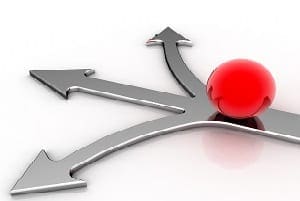statFor some women, it's about making an elegantement at special events or being a couple…

3 Spinal Decompression Options Explained
 Severe back pain is not just unpleasant—it can be debilitating, preventing you from performing your daily routine and even confining you to bed for days. In decades past, patients suffering from spinal issues were often given incapacitating pain medication, told to avoid physical activity, referred for physical therapy, and when they did not heal, they often underwent spinal surgery. Luckily, there are now drug-free, noninvasive treatments for severe back pain. Among these options are spinal decompression techniques. Spinal decompression uses advanced technology to apply a “distraction force” in order to relieve nerve compression often associated with low back pain and sciatica.
Severe back pain is not just unpleasant—it can be debilitating, preventing you from performing your daily routine and even confining you to bed for days. In decades past, patients suffering from spinal issues were often given incapacitating pain medication, told to avoid physical activity, referred for physical therapy, and when they did not heal, they often underwent spinal surgery. Luckily, there are now drug-free, noninvasive treatments for severe back pain. Among these options are spinal decompression techniques. Spinal decompression uses advanced technology to apply a “distraction force” in order to relieve nerve compression often associated with low back pain and sciatica.
According to the American Spinal Decompression Association (ASDA), “This technique of spinal decompression therapy, that is, unloading due to distraction and positioning, has shown the ability to gently separate the vertebrae from each other, creating a vacuum inside the discs that we are targeting. This ‘vacuum effect’ is also known as negative intra-discal pressure. The negative pressure may induce the retraction of the herniated or bulging disc into the inside of the disc, and off the nerve root, the thecal sac, or both. It happens only microscopically each time, but cumulatively, over four to six weeks, the results are quite dramatic.”
There are several spinal decompression options, including spinal inversion tables and traction (stretching) apparatuses which decompress the spine using motion. Traction can be applied using a decompression table in a doctor’s office or through ambulatory devices worn by the patient.
Inversion or Tilting Tables
An inversion table is designed to reverse the effects of gravity on the spine. Patient’s feet are secured to the table which can be tilted at any angle – including fully upside down – to relieve spinal pressure. Inversion or tilting tables target the lumbar muscles to reintroduce kinetic activity. As explained by the Mayo Clinic, “In theory, inversion therapy takes gravitational pressure off the nerve roots and disks in your spine and increases the space between vertebrae. Inversion therapy is one example of the many ways in which stretching the spine has been used in an attempt to relieve back pain.” Inversion tables can be found in medical offices and are also for sale as units to be used at home.
Computerized Spinal Decompression Tables
Many chiropractic offices have made the investment in computerized spinal decompression units which can be programmed to apply very specific stretches while the patient lies flat on a cushioned table. Patients remain fully clothed during each decompression session which typically lasts 20 to 45 minutes. Some spinal decompression units position the patient on their stomachs, but it is more common for the patient to lie on their back. The chiropractor secures a harness around the pelvis. The pulling tension on the harness is controlled by the doctor via the computer allowing for customized treatment plans. The machine alternates between zero and light tension on the harness.
Ambulatory Decompression Systems
As the name implies, ambulatory decompression systems allow the patient to move around freely during the treatment session. Treatment sessions take about half an hour and take place at a doctor’s office. The doctor attaches a framed support structure over the patients clothing similar to the external walking braces you might see surrounding the legs of a person who is relearning to walk. The external frame is fitted over the pelvis, torso or neck area depending on where the decompression treatment is needed. A gentle stretching force is evenly applied via the frame. Patients can perform simple activities and physical exercise during treatment, including walking, standing, or sitting. Patients who require long-term care or who travel frequently can be taught how to use the device on their own.
Getting Started
Before undergoing any spinal decompression treatments, the chiropractor evaluates the patient in order to determine if they are a proper candidate. If it is determined that treatments would be effective, the patient will be given a custom treatment plan, designed specifically for their needs. Spinal decompression is often accompanied by a strengthening and flexibility routine prescribed by the doctor. Unsurprisingly, clinical studies have concluded that the most effective long-term results happen when patients take an active role in injury and re-injury prevention.




